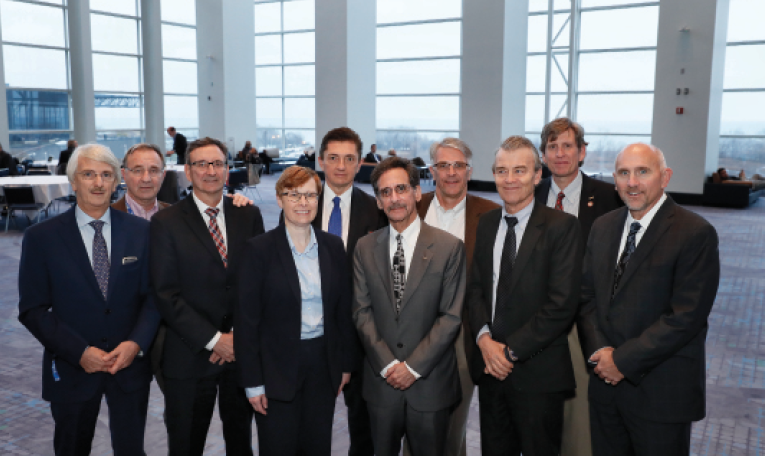The Roots and Growth of Interventional Oncology
RSNA played a unique and pivotal role in the birth and expansion of interventional radiology across the world in the last 15 years
As the field of interventional oncology continues to grow in acceptance and practice, its roots can be traced back to an off-site gathering at an iconic Chicago pizzeria during an RSNA annual meeting more than 15 years ago.
A group of radiologists met at Gino’s East to pursue their collective curiosity and sense of exploration about the future of ablation, which laid the groundwork for what became interventional oncology.
“I’m emotionally attached to that meeting because that was truly the start of a new chapter of medicine,” said Riccardo A. Lencioni, MD, now one of the world’s foremost interventional oncologists and founder of the European Conference on Interventional Oncology (ECIO).
At the time of the gathering, the term interventional oncology hadn’t yet been coined. Using radiofrequency ablation for liver tumors was in its embryotic stage, though it was used more frequently in Europe than in North America.
“The specialty has gone in a few directions I didn’t anticipate back then,” said Matthew R. Callstrom, MD, PhD, a consultant in the Division of Diagnostic Radiology at Mayo Clinic and a professor of radiology at Mayo Clinic College of Medicine in Rochester, MN.
Dr. Callstrom pointed to kidney ablation as an area in which he didn’t anticipate growth. At the start, interventional oncologists focused on liver ablation because that was where the technique was first employed.
“Kidney ablation was just starting to come online when we met, so people didn’t know if it was going to be a significant area,” Dr. Callstrom said. “But it has turned out to have climbed the ladder of clinical acceptance the fastest.”
Minimally Invasive Approach Takes Hold
Interventional oncology saw rapid growth as the image-based, minimally invasive approach to tumor treatment became more widely accepted as an alternative to surgery. Some of the newer technologies include radioembolization, microwave ablation, tumor cryoablation, focused ultrasound, light-activated therapy and ultrasound-mediated drug delivery.
Eventually, the informal meetings became more structured and led to the creation of symposiums at the Society for Interventional Radiology (SIR) and the Cardiovascular and Interventional Radiological Society of Europe (CIRSE).
The World Conference on Interventional Oncology, created as an annual U.S. conference, recently established the Society of Interventional Oncology to support the growing field.
SIR’s membership now stands at 6,500 practicing interventional radiology physicians, scientists and clinical associates. CIRSE has also expanded from 1,500 members in 2005 to more than 6,500 today.
According to the online publication Interventional Oncology 360, the expansion of interventional oncology is spurring the creation of programs and educational opportunities for radiologists. Fellowships in interventional oncology are emerging at various institutions around the United States.
Interventional oncology has yet to achieve recognition as a subspecialty separate from interventional radiology/diagnostic radiology by the American Board of Medical Specialties (ABMS). ABMS certification for interventional radiology/diagnostic radiology began in 2012. However, expectations are that interventional oncology will be considered for ABMS certification as interest in the field continues to grow.
The field’s burgeoning growth is also evident through the interventional oncology multisession series at RSNA’s annual meeting, which developed as the original group of 20 continued to meet over the years. The series began at RSNA 2005 and eventually developed into the five-day symposium it is now.
Many of the original group served as moderators or presenters of the symposium. They’ve earned international renown as their careers progressed and ablation gained wider clinical acceptance.
“RSNA, because of its wide-reaching international interest, was the perfect opportunity at that time to bring together experts from various countries,” said Damian E. Dupuy, MD, director of tumor ablation at Rhode Island Hospital and a professor of diagnostic imaging at Brown Medical School in Providence, RI. “It allowed the meeting at Gino’s to occur. Without the RSNA annual meeting, the growth of interventional oncology might not have happened as easily or as organically.”
